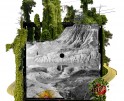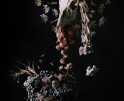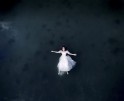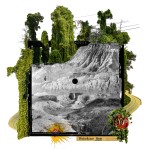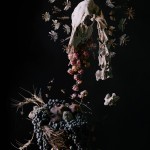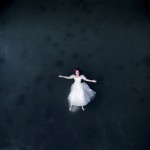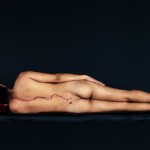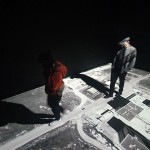Amy Elkins: Black is the Day, Black is the Night

19/32 (Not the Man I Once Was) Portrait of a man 19 years into his Life without Parole (solitary) sentence where the ratio of years spent in prison to years alive determined the level of image loss.
Amy Elkins has created a profound and deeply considered body of work, Black is the Day, Black is the Night, for which she garnered The 2014 Aperture Portfolio Prize. Her series “explores masculinity, vulnerability and identity through correspondence with men serving life and death row sentences in some of the most maximum security prisons in the US.” Her project uses a range of text, layered and manipulated photographs (obscured digitally according to the amount of time the inmate has been incarcerated), drawings, and other ephemera to create a narrative that makes us consider the existence of those behind bars. Black is the Day, Black is the Night is a unique approach to examining the human experience of those who are acutely aware of the passage of time. Be sure to visit her site to see the complete narration.
Amy is a photographer currently based in the Greater Los Angeles area. She received her BFA in Photography from the School of Visual Arts in New York City. Her portraits explore notions of vulnerability, identity and transitory states. Amy’s earlier work, Wallflower, looked into the nuances of gender identity and the male psyche. In her more recent work, Amy investigates additional aspects of male identity, gender stereotypes and modes of athleticism through projects Elegant Violence, looking to young Ivy League rugby athletes moments after their game and Danseur, which looks to young male dancers in Copenhagen, Denmark (both ballet and contemporary) moments after intensive training.
Amy has been exhibited and published both nationally and internationally, including at Kunsthalle Wien in Vienna, Austria; the Carnegie Art Museum in California; the Minneapolis Institute of Arts in Minnesota; North Carolina Museum of Art; Light Work Gallery in Syracuse and Yancey Richardson Gallery in New York among others. Amy has been awarded with The Lightwork Artist-in-Residence in Syracuse, NY in 2011, the Villa Waldberta International Artist-in-Residence in Munich, Germany in 2012 and most recently the Aperture Prize and the Latitude Artist-in-Residence in 2014.
She is represented by Yancey Richardson Gallery in New York, NY.
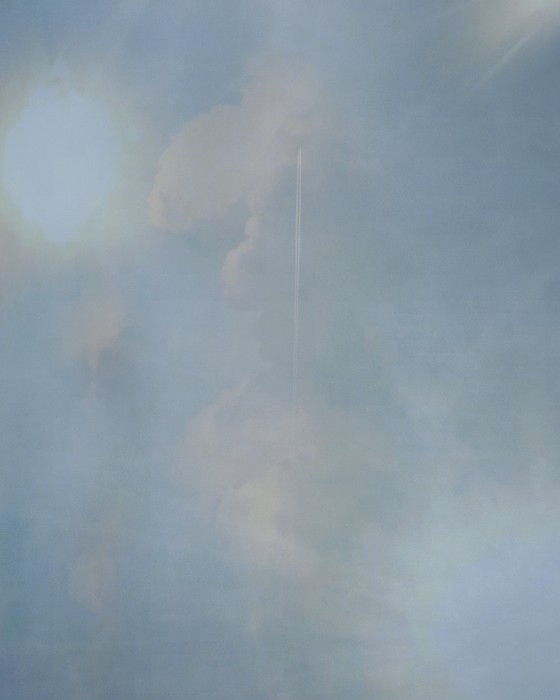
Three Years out of a Life Sentence (Sky) A pen pal serving a life w/o the possibility of parole sentence in a supermax prison (solitary) described being able to see the sky through a metal grated skylight in the small concrete exercise area he was permitted in alone for one hour a day. The additional 23 hours were spent in isolation. This image was constructed out of his description of the open sky he wished to see, using appropriated images which were then composited to account for the amount of years spent in prison.
Black is the Day, Black is the Night is conceptual exploration into the many facets of human identity using notions of time, accumulation, memory and distance through personal correspondence with men serving life and death row sentences in some of the most maximum security prisons in the U.S., all of which had served between 13-26 years at point of contact.
“I have asked myself if I have rather become so used to the company of my solitude that I no longer feel the passing of years and instead am grateful to have life pass with my every moment of existence as if the years were simply minutes.”
On average these men spend 22-1/2 hours a day in solitary cells roughly 6’x9’; not only facing their own mortality, but doing so in total isolation. I often wondered how that would impact one’s notion of reality, of self-identity or even of their own memories outside of such an environment? Did they embrace the mind of a dreamer, the mind of a thinker or succumb to their bleak environment and allow mental, physical and emotional collapse? Did their violent impulses land them in an infinite state of vulnerability? I began writing several men to look into these complex ideas and ask first hand the impacts of such severe isolation.
Out of our letters a collaboration unfolded. I constructed images using formulas specific to each of their stories, age and years incarcerated. Through these formulas their portraits became more unrecognizable and their memories became more muddled, regurgitated and fictional with the endless passing years of their sentence. Stripped of personal context and placed in solitary cells, their sense of identity, memory and time couldn’t help but mutate. I sent these images to them, they would critique them. This went on for years. Of the seven men I originally wrote, I remain in touch with one who has been in solitary confinement since 1995 for a crime committed at 16. One was released in 2010 at the age of 30 (after 15 years in prison), three eventually opted out, one was executed in 2009, another executed in 2012.
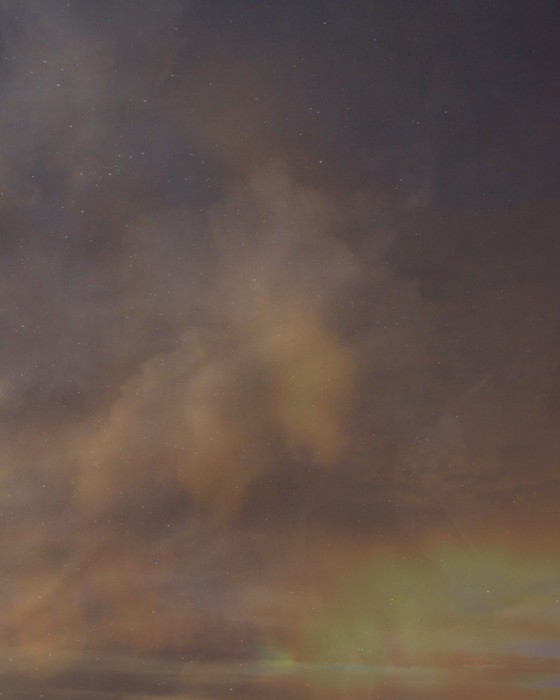
Nineteen Years out of a Life Sentence (Sky) A pen pal serving a life w/o the possibility of parole sentence in a supermax prison (solitary) described being able to see the sky through a metal grated skylight in the small concrete exercise area he was permitted in alone for one hour a day. The additional 23 hours were spent in isolation. This image was constructed out of his description of the open sky he wished to see, using appropriated images which were then composited to account for the amount of years spent in prison.

13/32 (Not the Man I Once Was) Portrait of a man 13 years into his death row sentence, where the ratio of years spent in prison to years alive determined the level of image loss.
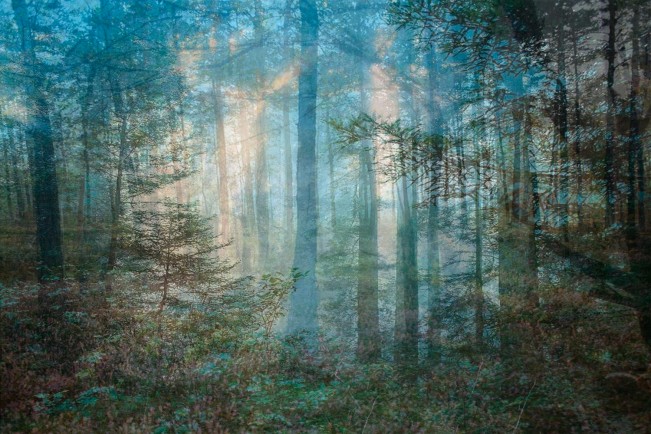
Four Years out of a Death Row Sentence (Forest) A pen pal 13 years into his death row sentence describes a childhood memory of taking refuge in the forest throughout his youth. This image was constructed out of appropriated images and composited to account for the amount of years spent in prison.
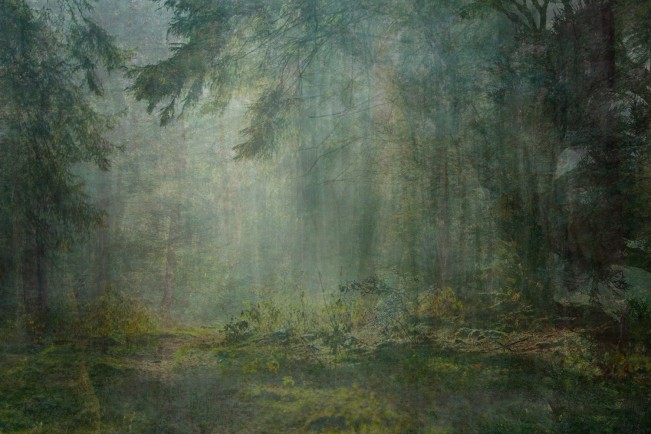
Nine Years out of a Death Row Sentence (Forest) A pen pal 13 years into his death row sentence describes a childhood memory of taking refuge in the forest throughout his youth. This image was constructed out of appropriated images and composited to account for the amount of years spent in prison.

13/32 (Not the Man I Once Was) Portrait of a man 13 years into his death row sentence, where the ratio of years spent in prison to years alive determined the level of image loss.
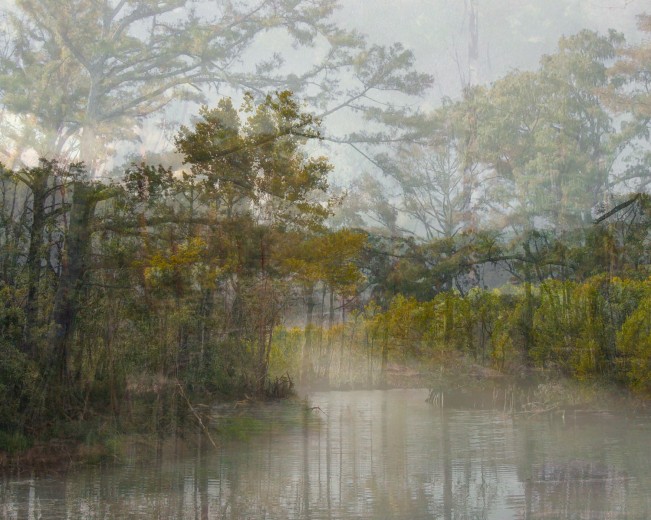
Three Years out of a Death Row Sentence (River) A pen pal serving a death row sentence describes being baptized several years ago. The Father had to reach through the bars to touch him, even with such restrictions he remembers the touch as electric. Despite the act of the baptism he feared it wasn’t good enough to save him. He longed to do a full submersion baptism in a river, like Jesus had. This image was constructed out of his description of the river he wished to be baptized in using appropriated images which were then composited to account for the amount of years spent in prison.
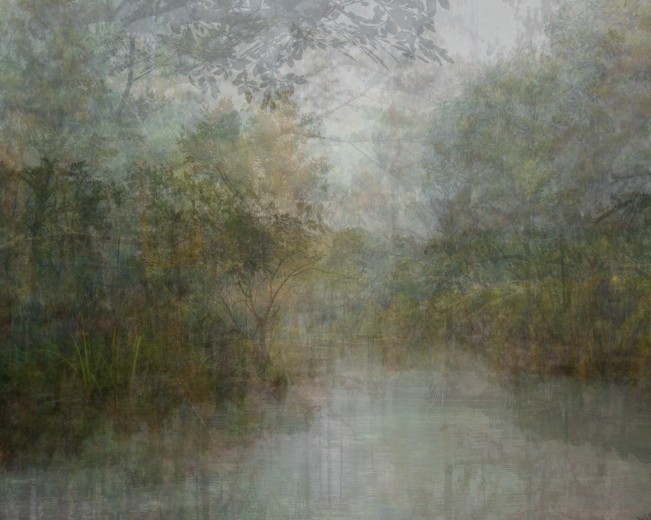
Thirteen Years out of a Death Row Sentence (River) A pen pal serving a death row sentence describes being baptized several years ago. The Father had to reach through the bars to touch him, even with such restrictions he remembers the touch as electric. Despite the act of the baptism he feared it wasn’t good enough to save him. He longed to do a full submersion baptism in a river, like Jesus had. This image was constructed out of his description of the river he wished to be baptized in using appropriated images which were then composited to account for the amount of years spent in prison.

26/44 (Not the Man I Once Was) Portrait of a man 26 years into a prison sentence (17 of which had been spent on death row), where the ratio of years spent in prison to years alive determined the level of image loss.
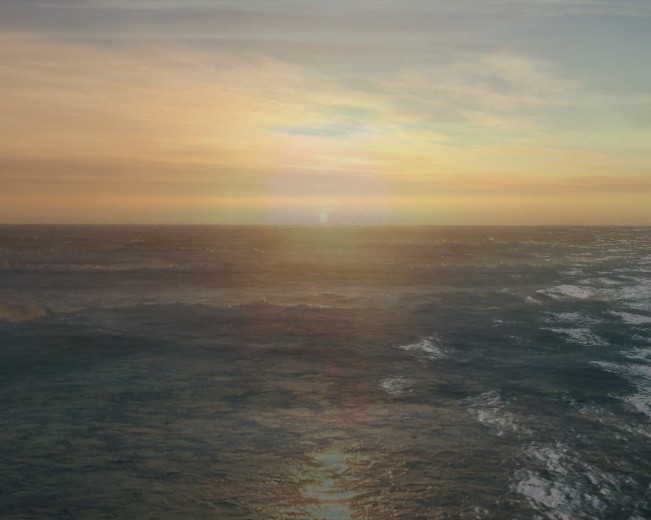
Twenty-two Years out of a Death Row Sentence (Ocean) A pen pal 26 years into his sentence in a landlocked prison, described an early childhood memory that haunted him, of walking further and further into the ocean during low tide until the sudden depth and darkness before him overcame him with fear. This image was constructed out of appropriated images and composited to account for the amount of years spent in prison.
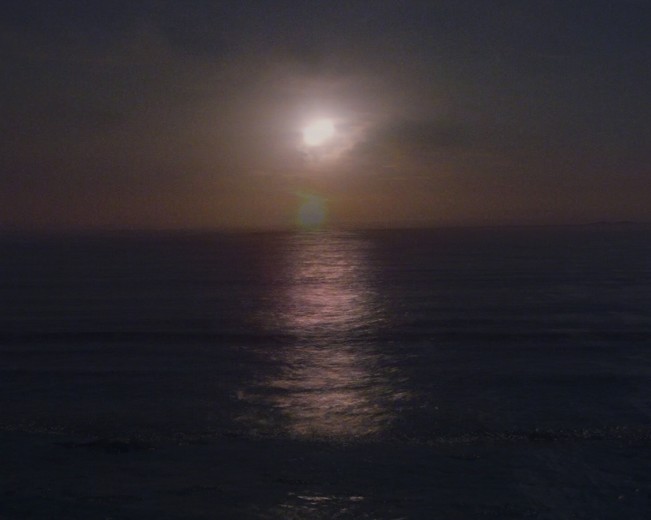
Twenty-six Years out of a Death Row Sentence (Ocean) A pen pal 26 years into his sentence in a landlocked prison, described an early childhood memory that haunted him, of walking further and further into the ocean during low tide until the sudden depth and darkness before him overcame him with fear. This image was constructed out of appropriated images and composited to account for the amount of years spent in prison.

13/32 (Not the Man I Once Was) Portrait of a man 13 years into his death row sentence, where the ratio of years spent in prison to years alive determined the level of image loss.
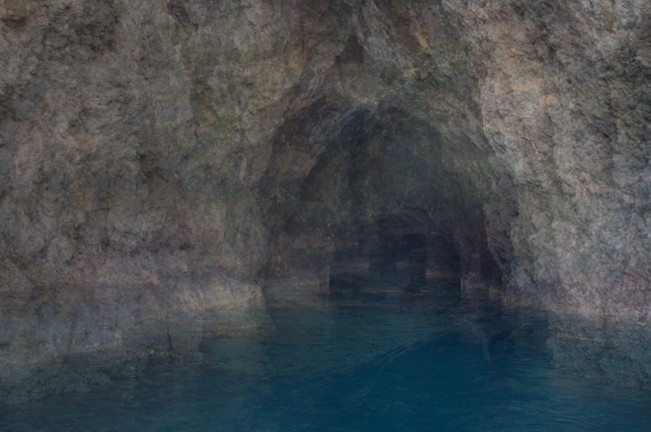
Eight Years out of a Death Row Sentence (Cave) A pen pal 17 years into his death row sentence describes growing up in Southern California and the cave he and his friends gathered at as teens. This image was constructed out of his descriptions and appropriated images and then composited to account for the amount of years spent in prison.
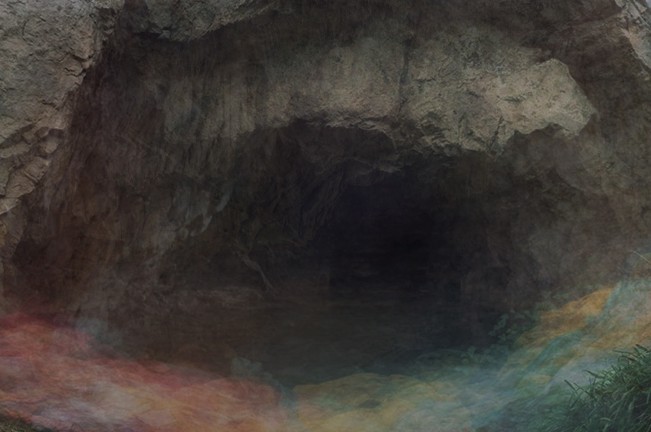
Seventeen Years out of a Death Row Sentence (Cave) A pen pal 17 years into his death row sentence describes growing up in Southern California and the cave he and his friends gathered at as teens. This image was constructed out of his descriptions and appropriated images and then composited to account for the amount of years spent in prison.
Posts on Lenscratch may not be reproduced without the permission of the Lenscratch staff and the photographer.
Recommended
-
Photography & Anthropology: Gloria Oyarzabal, “USUS FRUCTUS ABUSUS”May 3rd, 2024
-
Earth Week: Aaron Huey: Wallpaper for the End of the WorldApril 26th, 2024
-
Earth Week: Casey Lance Brown: KudzillaApril 25th, 2024
-
Tara Sellios: Ask Now the BeastsApril 6th, 2024
-
ALEXIS MARTINO: The Collapsing Panorama April 4th, 2024



